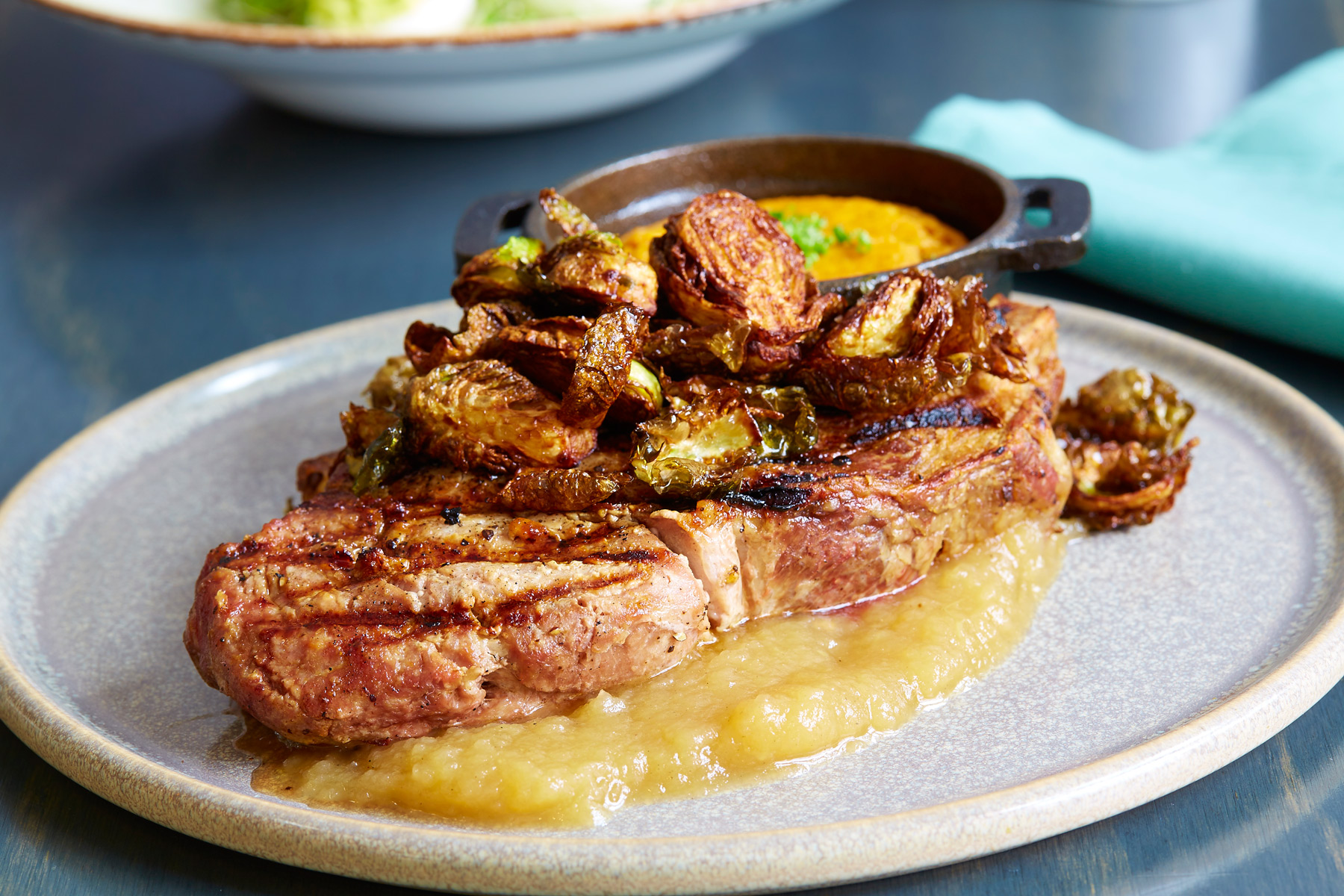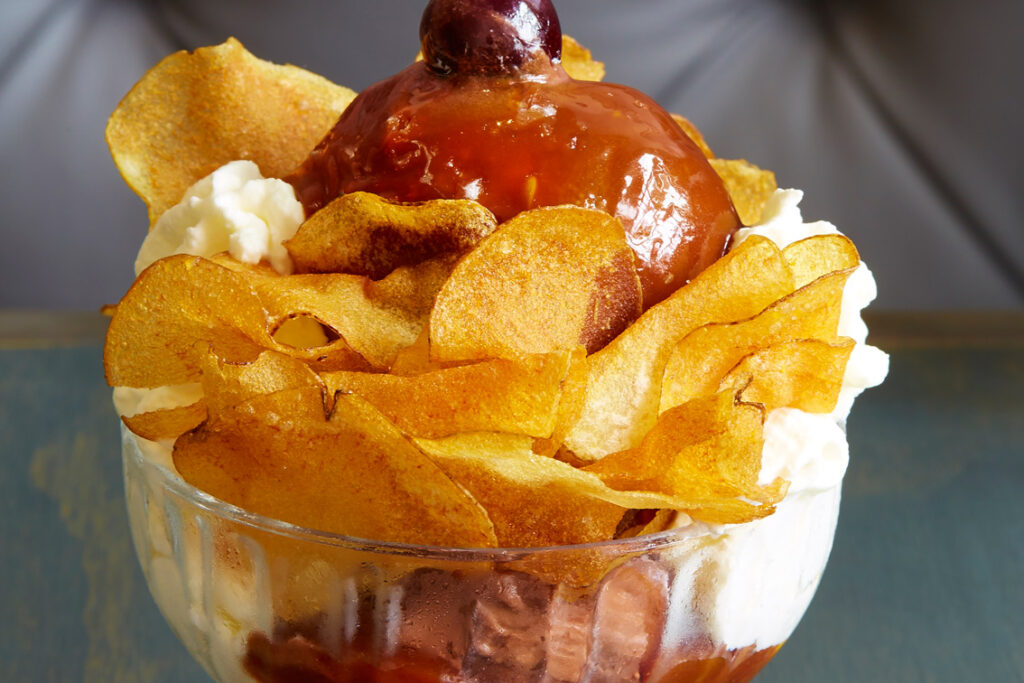Bliss is an egg cream served in a tall glass with a candy-striped straw. I learned this and other lessons at Remedy, on Lowest Greenville. The restaurant was conceived by Elias Pope, who co-owns HG Sply Co., two doors down. But where HG Sply Co. is dark, masculine, and moody, Remedy is lofty and light. The decor soothes with pale, milky green, brushed-pewter gray, and white—volumes of white—from the delicately embossed wallpaper to the snowy-painted tin ceiling above. Mercury-glass panels arc up like lithe-limbed flying buttresses. Under the statuesque tiers of art deco chandeliers, the scene is Gatsby-esque, something from another place, another time. Pope and his team—executive chef Danyele McPherson, pastry chef Guillermo “Gmo” Tristan, and bar-master Máté Hartai—have created an homage to the turn-of-the-century soda fountain, crafted in their own fashion, where flavors are crisp and pure as the bubbles in a clear stream of soda.

Hartai’s libations, made with house syrups, don’t limit themselves to turn-of-the-century ingredients, but there’s the same bold spirit of combination. (Something as classic as a chocolate-vanilla egg cream is, after all, an improbable pairing of cacao, cream, and soda, strange as the dodo bird, if you think about it.) Highballs—the spirit/soda order of gin and tonic, Scotch and soda—have twists. The Kentucky highball props spiced apple syrup against cider vinegar. In one cocktail, Champagne sparks lively conversation among Meyer lemon, Suze, and gin; in another, Hartai grounds the wild, vegetal notes of Chartreuse with cacao and staid, smoky Scotch.
McPherson treats flavors with similar precision. “She likes to do it just so,” our waiter said, explaining why our beet salad had taken a while to appear. Little details stand out. A garden patch of deviled eggs had sea-foam green filling, unexpectedly light, with strong tarragon flavor and bacon sprinkles for crunch. The alfalfa bed was a fresh, well-planned touch. Orange marmalade paired perfectly with a ramekin of whipped chicken-liver pâté, whose flavoring—brandy, cream, shallots—was classic and flawless and delicious spread on thick, airy slices of grilled challah. Hot-sauce butter added softness and spice to fine-grained hushpuppies that came out piping hot. McPherson knows the trick of simple refinement. Salads lightly dressed, flavors clean and uncluttered. Like knowing a single strand of pearls will do.

I found myself slowing down, taking small bites. Not because the food is dainty—crunch into grilled cheese—but because it invites attention. Notice how the tomato soup, likely some of the best you’ve had, is soft as a baby’s cheek, and how that softness is mirrored in the color, the velvety texture, and the flavor with its flawless touch of acidity.
McPherson researched old menus from hotels and diners as she developed her recipes. “I love to look back,” she says. Her goal was to “think about all these really simple foods. Think about classic food in America. How do you take something that’s Americana, something we’ve all had as kids, but make it where I’m an adult now and it’s really good? How can I make it better? Because I feel like right now everyone is looking forward. But there’s something great about food that has a feeling or a story to it. It’s powerful.”
One evening, a man leaned over to ask if that was the fried chicken, those the shrimp, and which was better. We found it hard to say. The chicken, with its crisp coating, tiny pitcher of gravy, luxurious sour-cream mashed potatoes, and green beans that snapped. The plump shrimp with their moat of smoked shrimp butter and green onions and grilled cherry tomatoes that brightened with freshness and acidity the creamy grits. Both were skillfully executed; both good in their own right. Even more so the Duroc pork chop, which arrived like the Stone Age on a plate, a juicy slab nearly 2 inches thick, accompanied by bourbon-spiked applesauce and roasted Brussels sprouts. Careful sourcing—arguably a return to old ways—is welcome. The heritage-breed meat was marbled and juicy, its flavor enhanced by dry-aging, shifting registers with each bite. “You can tell,” my friend said, “this pig led a happy life.”
Ruby red trout came with a hoppin’ John of tender field peas and rice, and silky greens that suffused the dish with mellow, garlicky sweetness. Our waiter poured a circlet of ham broth from another tiny pitcher, dousing fish and all so the flavors melded. That lick of elegance, though, was a salty kiss of death. I felt like Tantalus, longing to eat more, though each bite was like swallowing the sea.
“There’s something great about food that has feeling or a story to it. It’s powerful,” McPherson says.
It’s a hard line to walk. Tristan’s sweet inventions are creative—a chocolate pie avoided one-note decadence with drizzles of tart pomegranate molasses and bitter cacao-nib crunch—but basic pastry crusts, stodgy and bland, kept getting left on the plate. In sundaes, tomato jam and chicken cracklings stirred up delicate cornbread ice cream (I wished for bits of cornbread); pecan granola and pools of boozy bourbon-honey sauce brought a custardy banana ice cream to banana-bread/banana-pudding nirvana. These are no frozen lumps hastily topped with jarred cherries and a few chopped nuts; accordingly, some could use a higher topping-to-ice-cream ratio, so each bite resounds. But Remedy pulls off their ticklish balance, taking classic ideas and doing something smart and delicious.
A final case study: consider the cocktail made from vanilla ice cream and Pedro Ximénez sherry, with a balsamic-lacquered cherry poised neatly on top. Savor its sheer, dangerous deliciousness. Savor, too, the concept—its simple audacity. It’s an ingenious match of deep, fruity flavors. It’s also, on a basic level, a milkshake, all grown up. The pleasure of the familiar and the pleasure of its refinement. It’s a powerful tonic.







